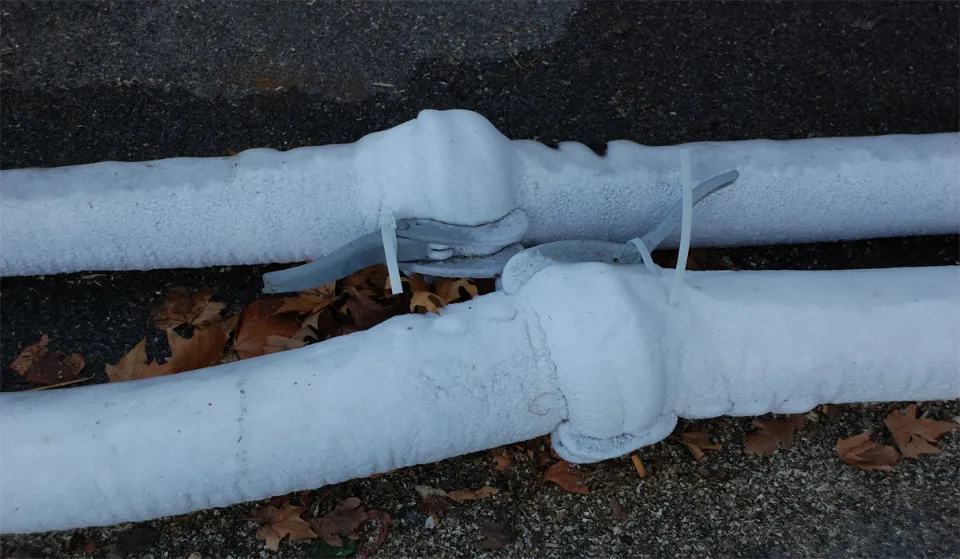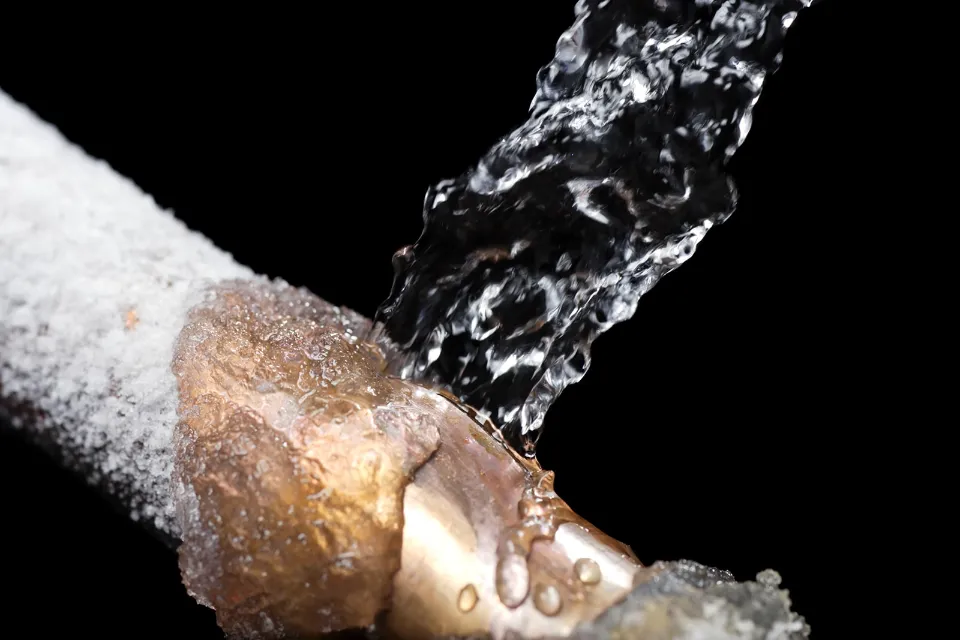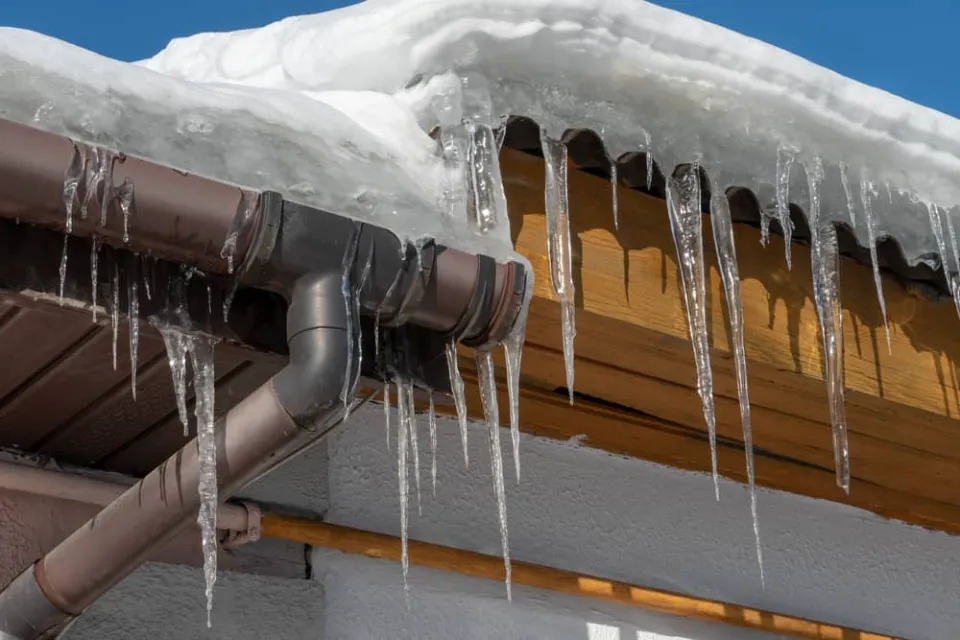If you always experience your pipes freezing, you may wonder how long for pipes to thaw naturally. This blog will tell you the truth.
You run the risk of having your interior pipes freeze as long as the outside temperature is below freezing. A burst water pipe is also more likely the longer your pipes are frozen.
So how long for pipes to thaw naturally? Your frozen pipes could stay frozen for days, weeks, or even months if you do nothing to thaw them out.
Here is how to thaw frozen pipes.
How Long for Pipes to Thaw Naturally?
Your pipes might need to defrost for days or even a few weeks if you do nothing at all. Fortunately, there are a few unthawing methods you can try to possibly expedite the process. It could take around 30 minutes to complete these techniques.
As previously mentioned, the weather has a significant impact on the times when pipes naturally defrost. The length and location of the pipe are additional factors that frequently affect them. It only makes sense that it will take longer to reverse the situation if a pipe has been frozen for numerous days.
Will Frozen Water Pipes Thaw on Their Own?

Once temperatures rise above freezing for a sustained period of time, frozen water pipes will thaw. It might take hours or even days for this natural thawing to occur. When a frozen pipe is underground, it might not thaw even when the air temperature rises above freezing.
- After temperatures rise above freezing for an extended period of time, frozen pipes will begin to thaw on their own.
- For pipes to completely thaw, it might take several hours or even days of above-freezing temperatures.
- Take immediate action to defrost any frozen water pipes.
Relying on frozen pipes to thaw on their own is not a good idea. Waiting for pipes to thaw increases the chance that they will burst, causing costly plumbing repairs, water damage, and flooding.
How to Know If Your Pipes Are Freezing?
Check your home for any exposed, uninsulated pipes from time to time to see if there is frost on them. Pipes that are frozen during the winter are never a good sign. If temperatures have yet to fall below 20 degrees Fahrenheit in your area, do yourself a favor and insulate them, or have them insulated by a professional now.
Spying frost is also a good indication that you should turn your heater up. The warmth that your heater produces through your exterior walls will be beneficial to exposed pipes at the exterior of the building.
One of the most obvious signs of a frozen pipe is turning your faucet on and having absolutely nothing come out. Turning the valve may cause a faint sucking sound to be heard. If no water appears after that, immediately shut off the valve.
Unexpectedly, unpleasant drain odors are another indicator of frozen pipes. You are more likely to experience a whole-house backup the more odorous your drains are. This odor is caused by rotting food and other organic waste that cannot pass through the pipes leading to the public sewer system.

How to Thaw Frozen Pipes?
If your pipes are frozen, how can you tell? Turning on the bathroom or kitchen faucet and only getting a trickle or a few drops of water could mean that the water inside the pipes has frozen, preventing a free flow. Though you might be better prepared than you think to handle the situation, don’t freak out.
Here is a quick tutorial on thawing frozen pipes.
Step 1. Turn on the Faucet
Keep the water running; even a tiny drip from the faucet can help stop a pipe from bursting. The solution is straightforward: when freezing occurs, tremendous pressure develops between the faucet and the ice blockage. This pressure is released when the faucet is open, which helps to avoid a burst.
Step 2. Apply Heat to the Frozen Area
Using a hair dryer, gradually apply heat. This can be done in a number of ways. You can either use an external heat source, like a hair dryer or space heater, or you can wrap the pipes in thermostatically controlled heat tape. The use of a propane torch poses a fire risk and may cause pipe damage.
If you do decide to use a hair dryer, start blowing air close to the faucet end of the pipe and work your way gradually toward the coldest part. Just watch out not to burn a fuse or overheat the hair dryer. Keep in mind that while applying heat, the faucet needs to be left running.
Step 3. Continue to Apply Heat

Up until the water pressure is back to full, don’t turn off the heat. After the pipe has thawed, it’s still a good idea to leave the faucet open for a short while. This will give the ice sufficient time to fully retreat from the line.
Step 4. Check All Faucets and Prevent Pipes from Freezing in the Future
For any additional frozen pipes, check each faucet in your residence. One frozen pipe could indicate that several others have also been impacted. Call a plumber if the issue doesn’t go away. You can prevent pipes from freezing again by taking a few simple steps:
- Keep your house above freezing before leaving, and turn off all of the water supplies.
- A foam rubber or heating cable should be used to insulate all water pipes, particularly those that are close to exterior walls.
- To encourage airflow, keep cabinet doors open.
- Allow cold water to drip from your faucets; even a trickle of water moving through a pipe makes it less likely for it to freeze. You can catch the drips and reuse the water, perhaps for cleaning or for watering plants, to avoid wasting it.
Keep Your Pipes from Refreezing
Your pipes have a chance of freezing again if they have already done so this winter. Self-regulating heat cables covered in insulating tape should be used to insulate exposed pipes to avoid this. These cables have thermostats built into them that activate if the temperature drops too low. This will prevent ice buildup in your pipes.
- Self-regulating heat cables and insulating tape should be used to cover any exposed pipes.
- Your home’s temperature should be raised to avoid frozen in-wall pipes.
- To keep certain rooms warm and avoid frozen pipes, use space heaters.
- In areas where pipes frequently freeze, such as bathrooms, attics, and basements, space heaters are particularly helpful.
Increasing the temperature is one of the best ways to prevent ice blockages if your in-wall pipes are prone to freezing. Install Vivint water sensors in the area where your pipes are frozen.
When the temperature drops too low and there is a chance that your pipes could freeze, the sensors will immediately alert you. Even better, you can integrate it with their smart thermostat to instantly heat your house and effectively prevent frozen pipes in the future.
Conclusion: Thaw Frozen Pipes
The water inside plastic pipes could freeze during the temperature drop, which would cause it to expand and create pressure.
It can be difficult to deal with frozen pipes. Many people feel the urge to attempt to let the pipes defrost on their own because of this. The truth is that pipe unfreezing can occasionally take days of perseverance. Another significant element is the weather.
FAQs
Will Pipes Naturally Thaw?
Pipes will eventually unfreeze on their own naturally, but this takes far more time and before thawing occurs the freezing could become much worse. Eventually, this might cause the pipe to burst, which would cause a lot more harm. Thawing a frozen pipe size early is preferable to waiting for it to become worse.
Why Are My Pipes Taking So Long to Thaw?
Even as outside temperatures rise, your pipes could still take a considerable amount of time to thaw. If your yard, walkways, and other outdoor areas are still heavily covered in snow, ice, or frost, underground pipes will take the longest.
What to Do If Pipes Won’t Thaw?
The thawing process will move more quickly if the faucet is kept open and moving water is allowed to flow through the pipe. Apply heat to the section of the pipe that is frozen. A hair dryer, an electronic heating pad, or both can be used to warm the area around the pipe.





